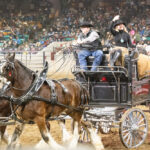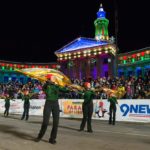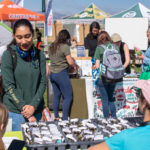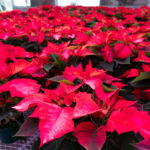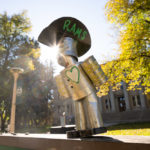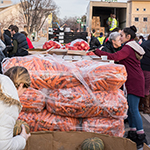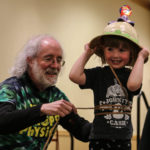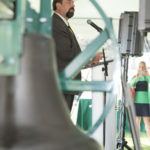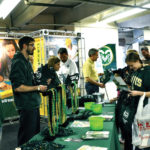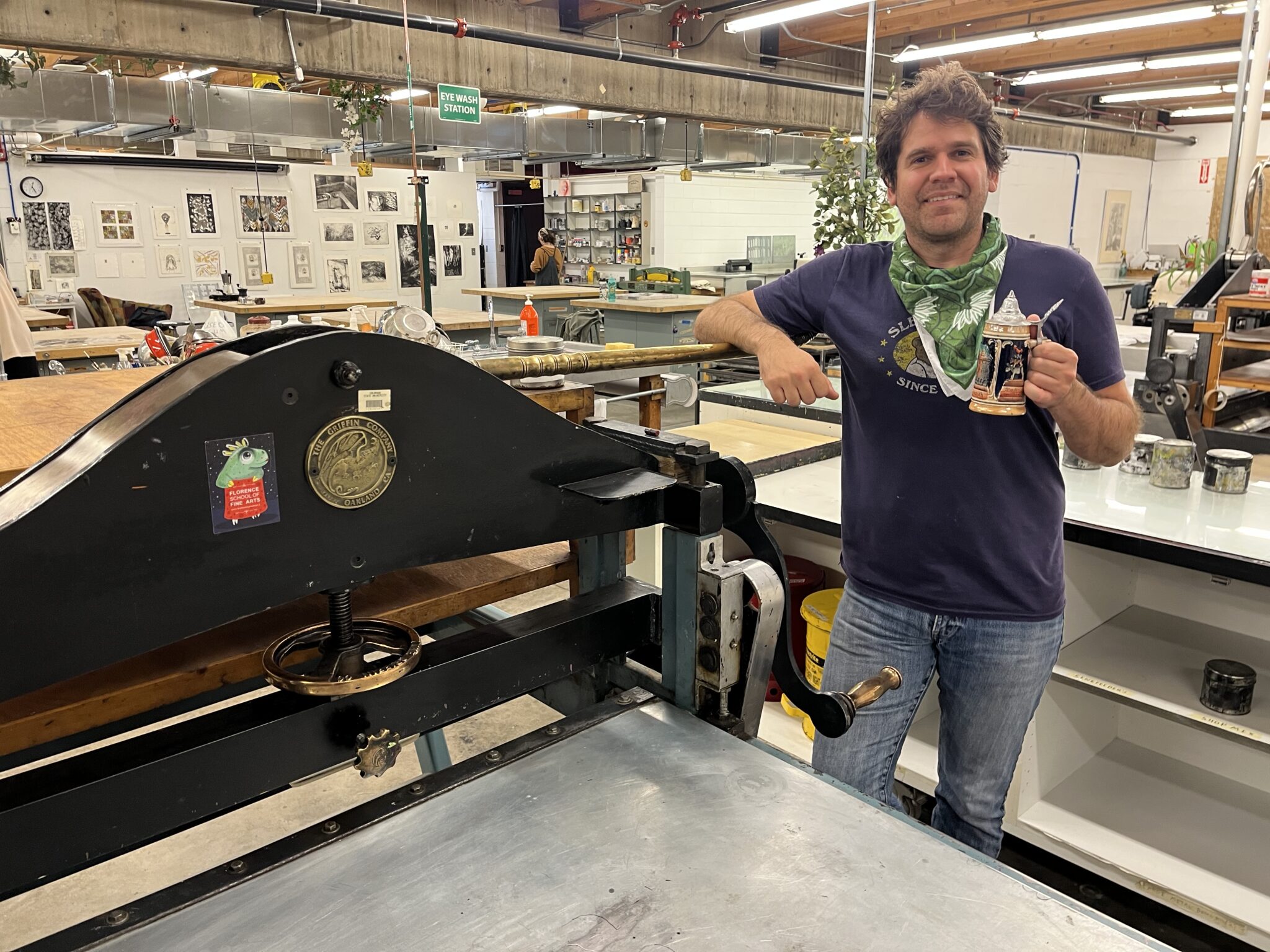
While Johnny Plastini is best known on campus as a faculty member and printmaking area coordinator in the Department of Art and Art History, he also applies his artistic passions to growing hops and brewing beer.
And this fall, the associate professor is working with CSU Fermentation Science and Technology students to draw up a new recipe for a beer that uses his own homegrown hops. The brew will be fashioned after the recently discontinued Anchor Steam beer that got its start in San Francisco during the California Gold Rush.
It will be brewed in early October for canning later that month.
Brewing roots
Plastini started brewing beer at age 18 in his dorm room at the University of California Santa Cruz and quickly developed a love for tinkering with the ingredients.
“If you are under 21 in the United States, then you can’t buy beer in the store, but under federal law you can buy ingredients to make beer if you are 18,” he says. “You can actually customize amazing craft beers far more cheaply than going to a bar or buying bottles in a store.”
In 2010, Plastini earned Level 1 Cicerone certification, akin to being named a sommelier of beer. He achieved Level 2 certification in 2013, and finally Level 3 in 2015 with the Beer Judge Certification Program, making him qualified to perform sensory analysis and judge beers at competitions such as the Great American Beer Festival.
A chance encounter
Plastini met New Belgium Brewing-sponsored FST instructor and brewmaster Jeff Biegert last spring at an event where they both received Best Teacher Awards. They started chatting about brewing, and when Biegert heard that Plastini grows his own organic cascade hops at his Fort Collins home using only rainwater (also known as dry farming), the two discussed collaborating on a beer.
The partnership has since expanded to include students in Plastini’s Art 366 course, “Community and Sustainability in Printmaking.” Past student projects have included creating posters for the Poudre Fire Authority using ink made with ash from the Cameron Peak Fire. This time, his students are printing labels for the beer cans, after digital designs are drafted in collaboration with Assistant Professor Roberto Muntoreanu’s graphic design students.
In a nod to the Gold Rush roots of the Anchor Steam style of beer known as California Common, the labels will be made with a lithographic press – in a process commonly used from the 1820s to the 1930s for everything from whiskey labels to bank documents and wallpaper.
CSU’s Printmaking Lab is home to one of the country’s largest collections of lithographic limestones, which are used to make prints through the repulsion of water and grease. A video about historic lithographic printing can be viewed at col.st/xn36x.
Similar processes
Plastini sees many artisanal parallels between brewing and printmaking.
“Brewing is a craft, a science and an art that is intrinsically linked to my printmaking process,” he says. “Both meet across a bridge of alchemy.”
In addition, Plastini notes with a smile, in the 15th century Johannes Gutenberg’s first European printing press was fashioned from a wine press.
He said his organic cascade hops are a classic West Coast variety that are perfectly suited to create the California Common style of beer, continuing a long legacy that lost a key player in Anchor Steam this summer, when Anchor Brewing Company went out of business after 127 years.
“I was sad to see Anchor Steam discontinued, and I don’t want to see this style go away,” Plastini says. “It’s a culturally significant style of beer. Our new brew is going to be like a true Gold Rush beer.”
And students in two departments, in two different colleges, are beneficiaries of the collaboration.



